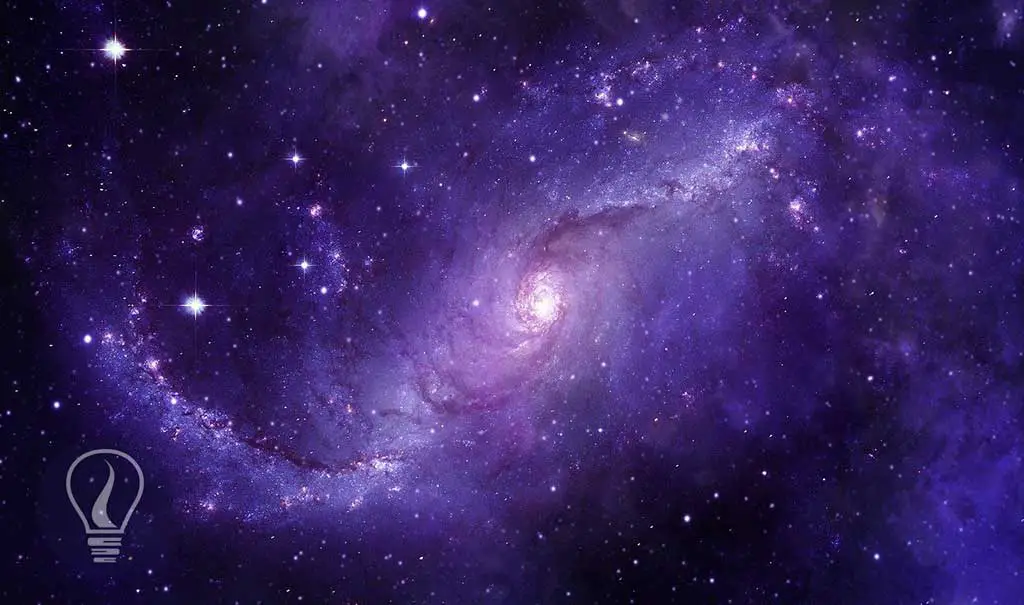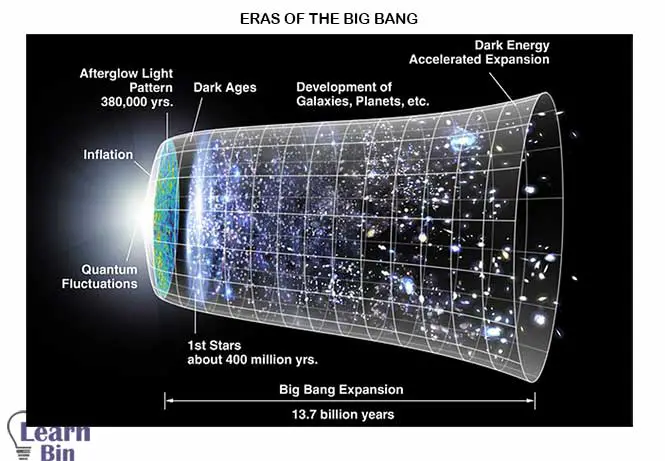More results...


Up to the middle of the 20th century, the accepted theory about the universe was the static universe theory. That describes that the universe is static, infinite, and ageless. In 1929 an American astronomer Edwin Hubble (1889–1953) observed all the galaxies are moving apart from each other. In other words, he discovered that the universe was expanding and moving away from each other.
He also finds out that the distance between any two galaxies is much greater, and their relative speed of separation is a much greater value. That means the galaxies very far away from us are moving at very high speeds compared to the galaxies nearby us. If everything is moving from everything, that means once they are closed together. This was the first evidence for the building of “The Big Bang Theory” which is the accepted theory of the beginning of the universe.
The Big Bang theory explains the origin/ beginning of the universe that we know. The idea explains that the universe began as a tiny single point. And it has been expanding as big as today and it is still expanding.
Before the explanation, we should understand that the Big Bang was not an actual explosion. The Big Bang theory explains that the Big Bang was all space stretching everywhere all at the same time suddenly. The universe started very tiny (so much smaller) and very quickly expanded.
The universe did not expand into anything. It was just the space was expanding into itself (larger space). Because the Big Bang was the event that created space and time. Due to the Big Bang being the event that marked the creation of space and time, no location can be specified for this event and there was no “Before”!
In 1965 American radio astronomers of Arno Penzias and Robert Wilson were found a strange noise from space continuously at Bell labs. First, they thought that may be a technical error of their machines. But the noise was coming continuously. So, they studied further about the noise. And they found that the noise was occurring from a kind of microwave that receives from the space.
The cosmic microwave background (CMB) is known as leftover radiation from the big bang. Cosmic Microwave Background is also called “Relic Radiation”
Cosmic inflation or simply inflation explains the rapid expansion of the universe after the big bang. The universe has undergone a rapid expansion that was faster than light and it is still expanding.
With further studies on CMB, scientists found that the CMB can be observed from any direction on the earth, and all the radiation has the same temperature. This was significant evidence that proves the rapid expansion of the universe. The same temperature of the CMB means that there is no time to pass the heat out.
The inflation lasted from 10-36s to 10-33s and 10-32s after the beginning of everything. The inflation theory says that 100 million light-years have expanded just in the inflation epoch.
According to the Big Bang theory the universe was born about 13.8 billion years ago at a tiny single point.

The plank era was prior to the 10-43s since the Big Bang. In this era, natural laws did not make any sense. All the fundamental forces which are Gravity, Strong force, Weak force, and electromagnetic force were combined into a “super” force. So, we do not know what the universe looked like in the Plank era.
This was the era when gravity became distinct. The Great Unified Theory (GUT) is a model of particle physics that merges three fundamental forces of the strong force, weak force, and electromagnetic force into one single force at high energies. The GUT era lasted from 10-43s to 10-38s.
The grand unified theory predicts that the universe was undergoing a rapid expansion near the end of the GUT era. This expansion was much larger than the speed of light and it was just like an atom was expanded into the size of our solar system just in 10-36s.
Perhaps causing the inflation of the universe strong forces become distinct in this era. But still, electromagnetic and nuclear weak forces were combined. In this era, the temperature was extremely high, and it was more than 1015K. The electroweak era lasted 10-10s.
At the end of the era, both electromagnetic forces and weak forces were distinct. Energy and matter could not be identified separately. It was so hot and dense, and they were practically the same stuff.
Finally, the four fundamental forces were formed in the particle era. So, ordinary particles started to be formed. Somehow both matter and antimatter particles were formed in almost equal numbers. But the particles were formed slightly more than antiparticles. As a ratio, it was one billion and one proton particle for each one billion antiparticles.
Antiparticles are really similar to particles. The only difference is they carry the opposite charge and the opposite spin as particles. When particles meet antiparticles, suddenly they will annihilate into energy. By then the universe had expanded for a billion kilometers in diameter. The universe had cooled far enough (to 1012 K) to end the creation and destruction process of particles and antiparticles.
This creation and destruction process of particles and antiparticles lasted for 0.001 s (1 millisecond) the slight run of the particle left us all the baryonic matter in the universe. If the same number of matter and antimatter were formed, they would eventually annihilate and only photons will be left in the entire universe.
Just the universe was one millisecond old, the heavier elements were created and suddenly broke down. Because it was so dense and hot. This fusion and breakdown were continued until about 3 minutes. After 3 minutes, the universe was cold enough (109k) to form the first stable nuclei were formed.
75% of Hydrogen, 24% of Helium, and traces of heavier nuclei were formed. By then, the universe had grown to one hundred billion kilometers. At this point, the universe was like an extremely hot soup filled with countless particles and energy.
Until the next 300000 years, particles were in the form of atomic nuclei and free electrons. Until then the universe was too hot to form neutral atoms. There were fully ionized particles and photons (light) could not escape. After 300000 years of the big bang, the universe was cooled down to 3000K. At this temperature, Hydrogen and Helium nuclei began to capture free electrons.
At this stage most of the gas becomes transparent, and the photons are free to cross the universe. These are the photons that we observe today as “Cosmic Microwave Background”. When we look at the universe, we can never see the past more than 300000 years. Because that was the time when photons scattered. Earlier to this, there was only a hot surface of the universe.
The era of nuclei ended in 380000 years. Then we come to the atomic age when photons are decoupled from matter and the nucleus begins to combine with electrons. Initially heated atoms slowly assembled into protogalactic clouds. When the hydrogen gas clumped together, and gravity put it under great pressure.
So, then the stars and galaxies began to form. The radiation emitted from them dissolved the stable hydrogen gas into a plasma that still spread through the universe. And allows visible light to pass. The first galaxies were formed about 1 billion years after the Big Bang, marking the end of the atomic age and the beginning of the era of galaxies.

Image by WikiImages from Pixabay
Image by Lumina Obscura from Pixabay
Interesting video about the big bang theory